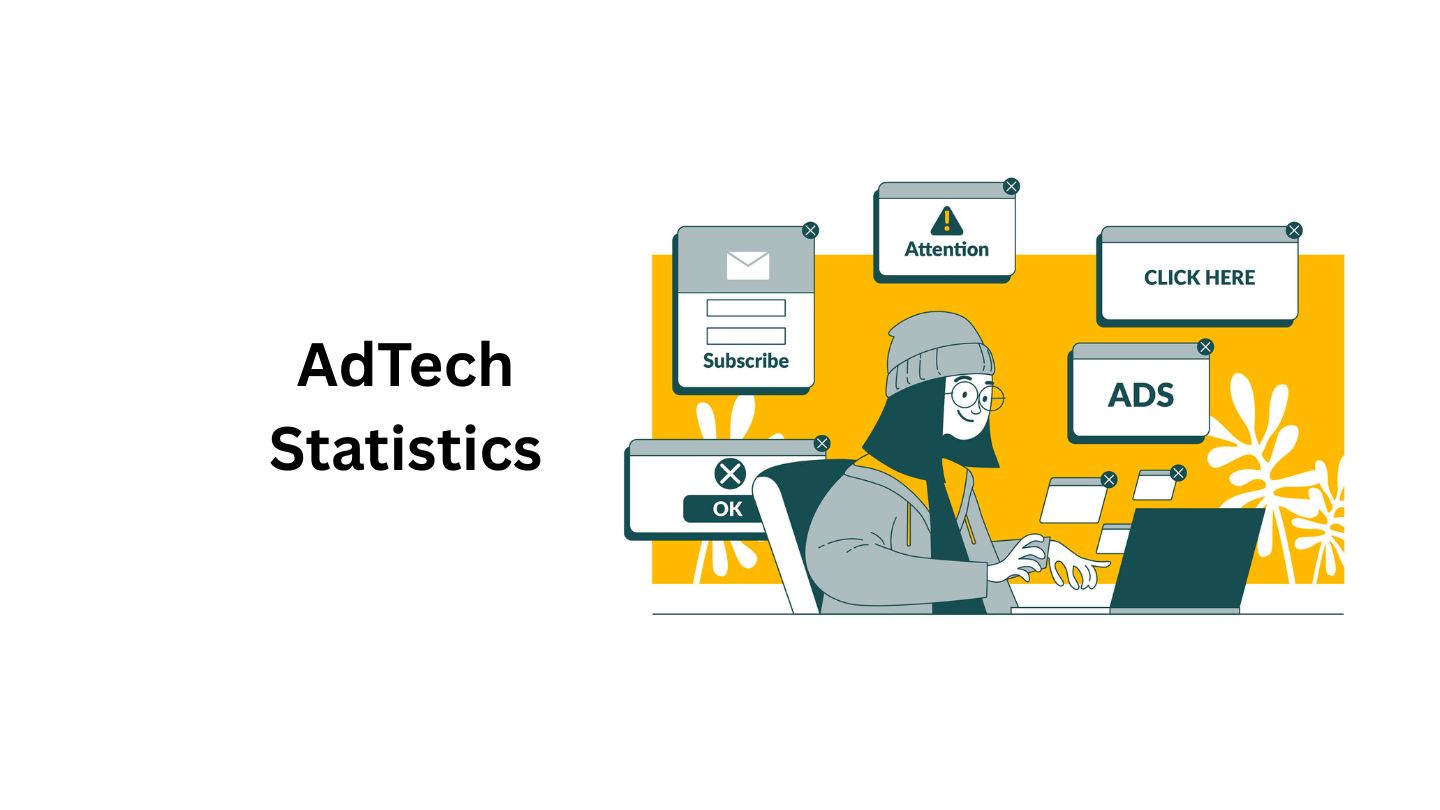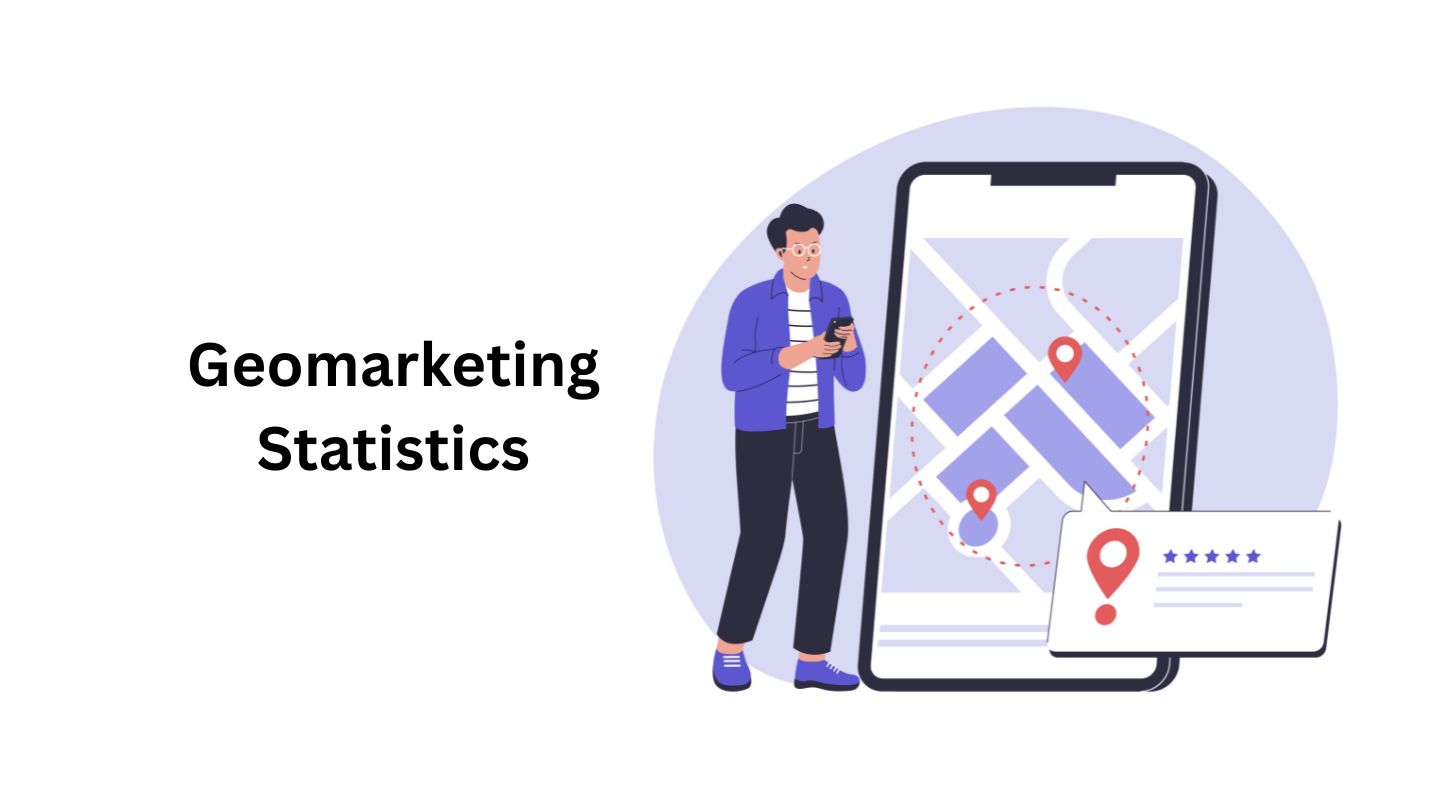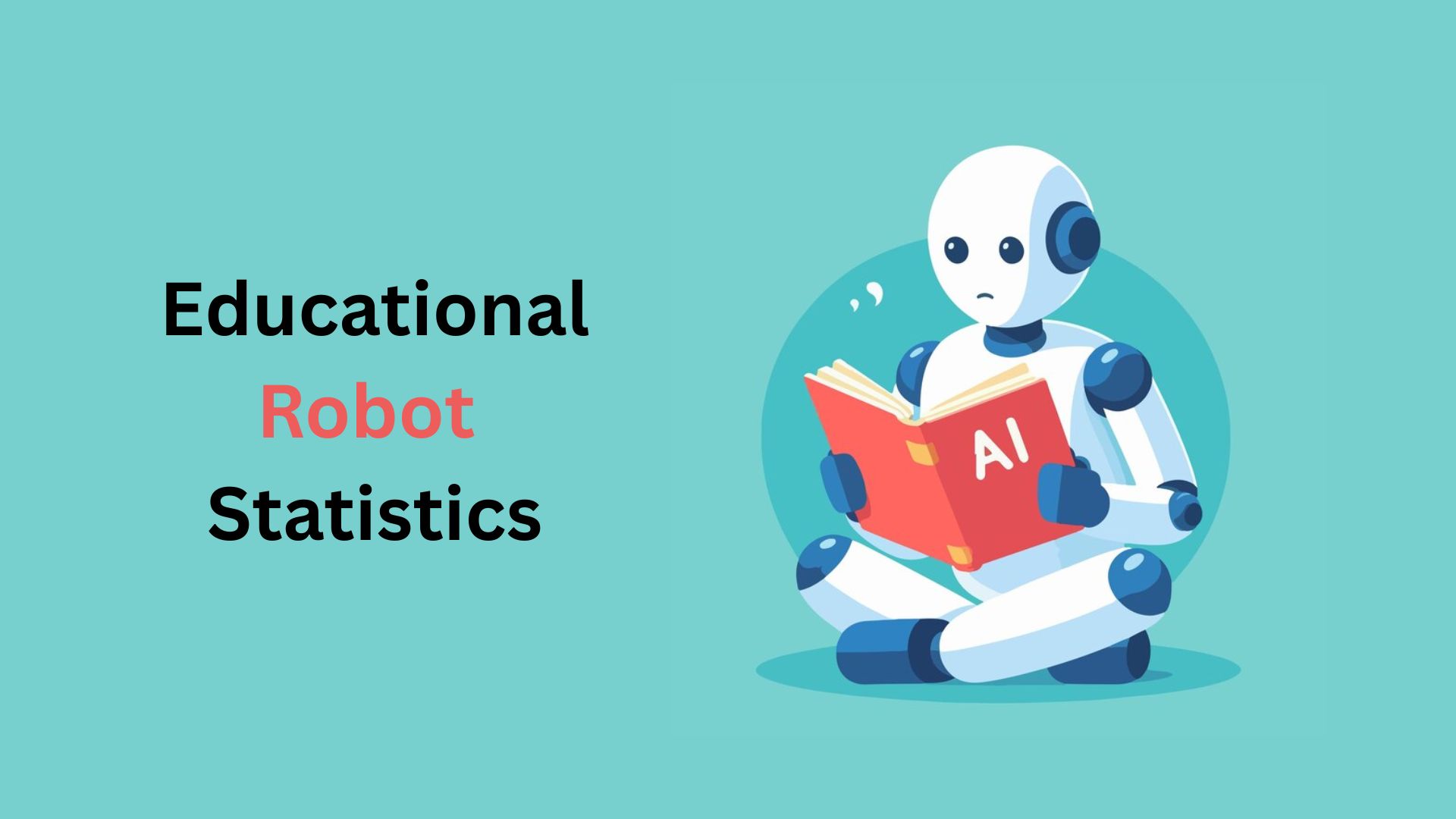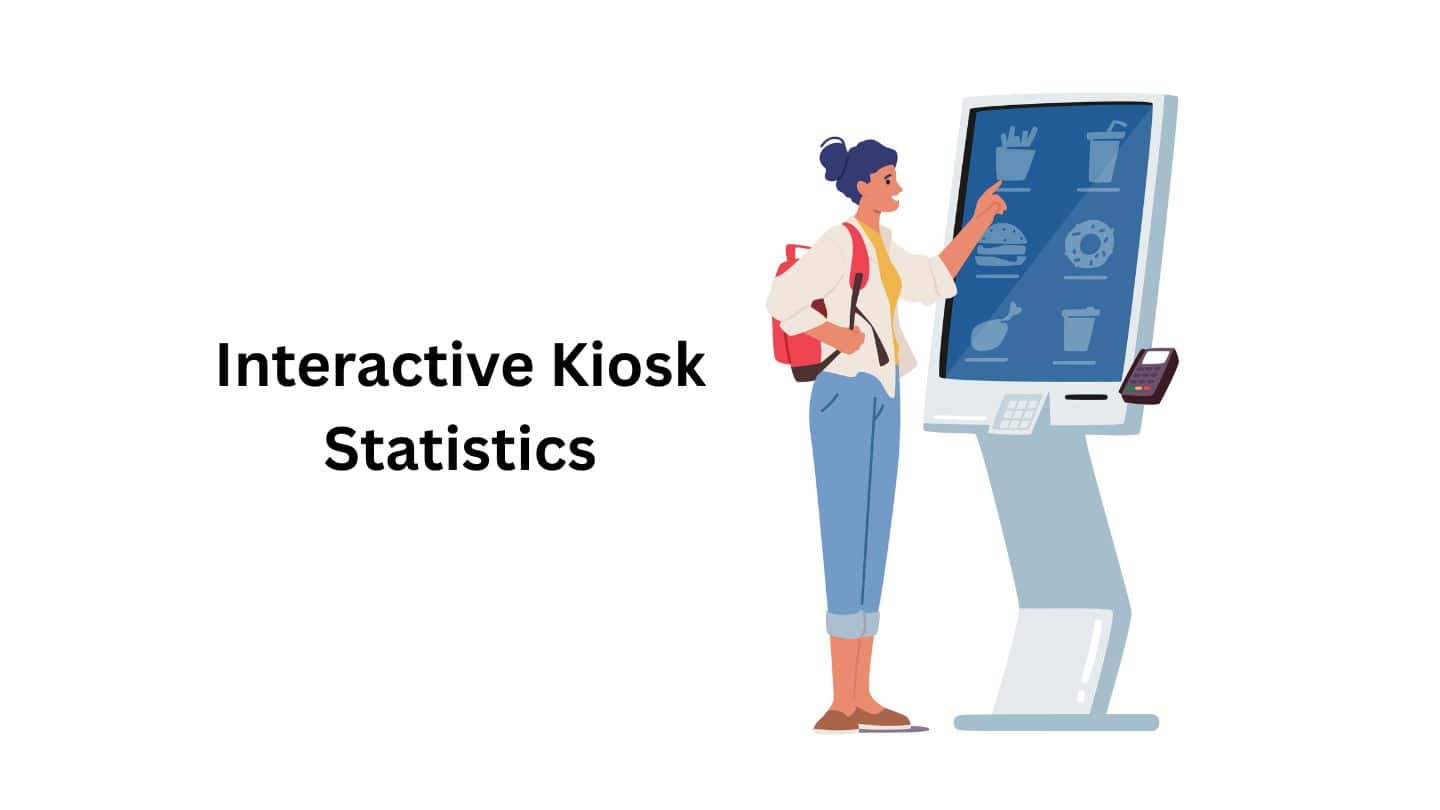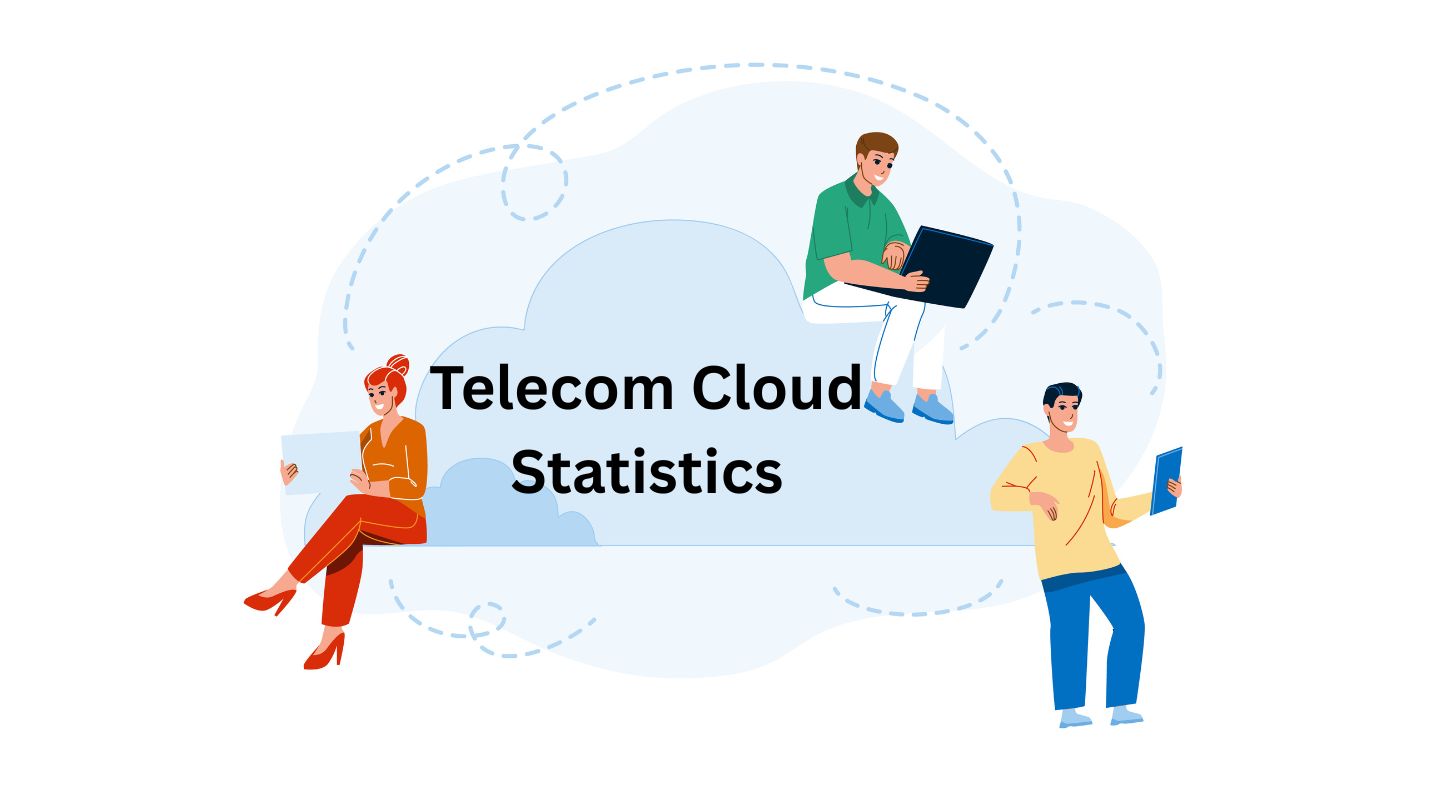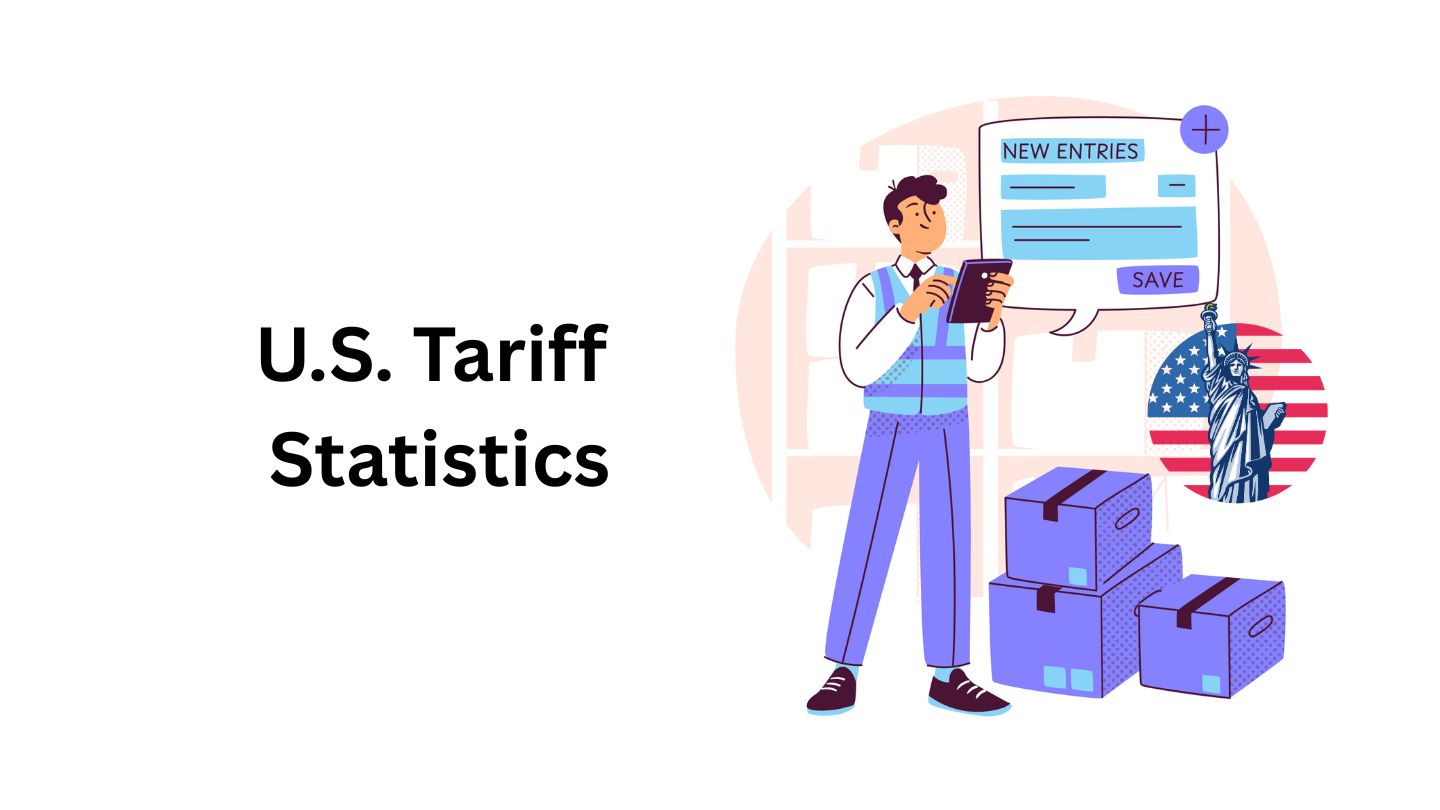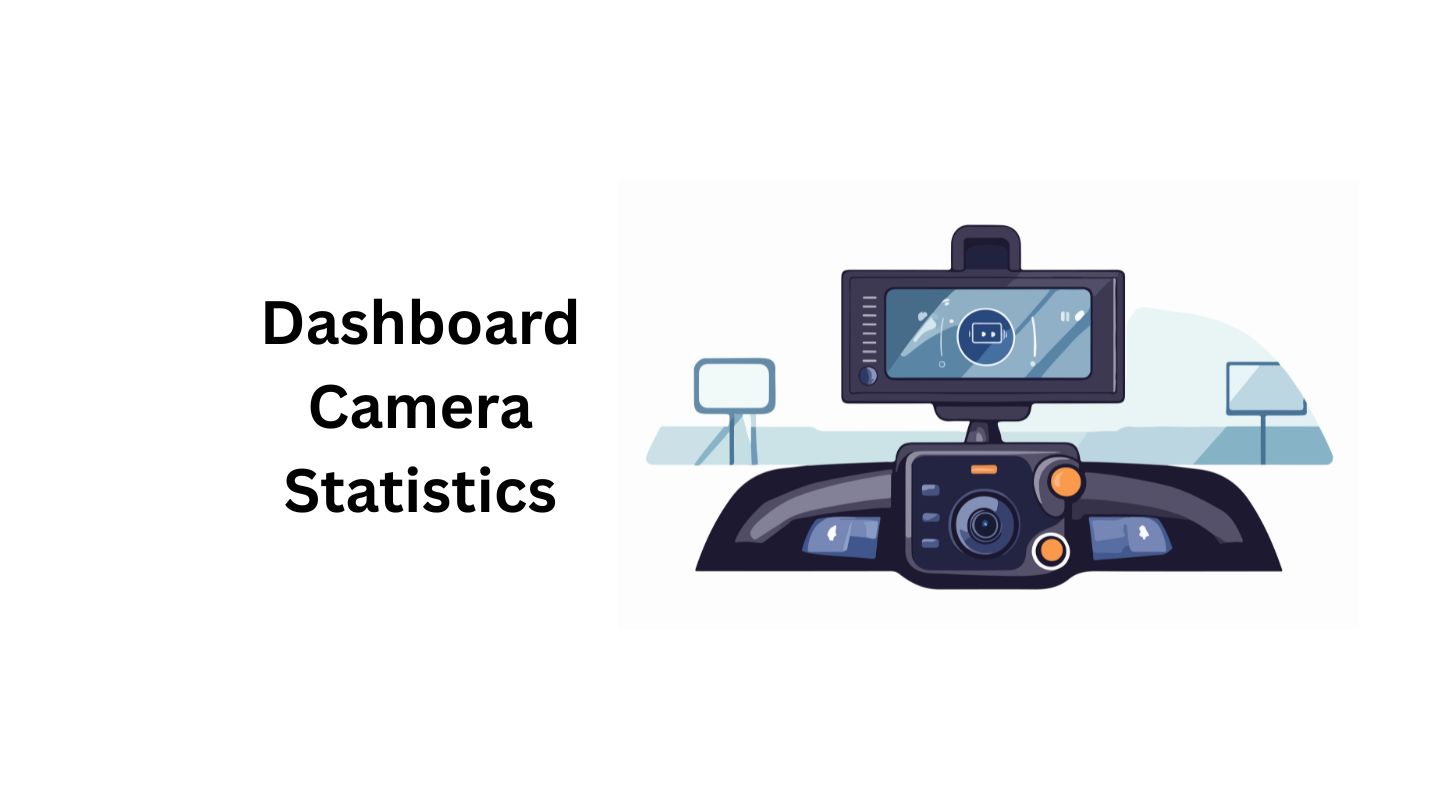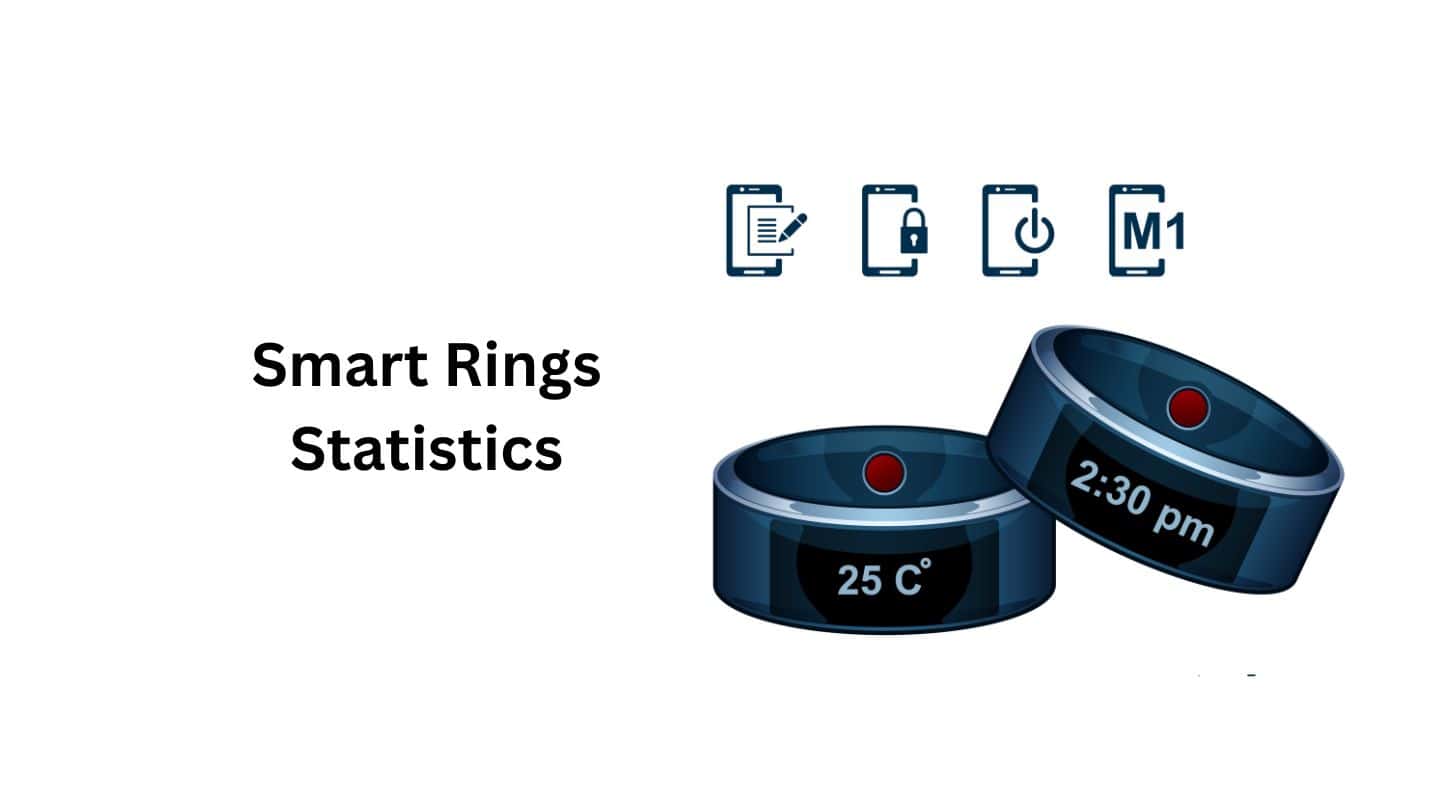Gamification Statistics By Impact, Sales, User Activity, Economics, Upskills, Benefits and Facts

Updated · Jan 06, 2025


TABLE OF CONTENTS
- Introduction
- Editor’s Choice
- What is Gamification?
- General Gamification Statistics
- Gamification Industry Statistics
- Impact of Gamification on Performance
- Sales Gamification Statistics
- Gamification and User Activity Statistics
- Employee Engagement Statistics
- Gamification Use Cases Statistics
- Business Gamification Statistics by Employees
- The Economics of Gamification
- Gamification and Upskills Statistics
- The Future Trends of Gamification
- Benefits and Drawbacks of Gamification
- Game Elements in Gamification
- Conclusion
Introduction
Gamification Statistics: Gamification, which uses game-like features such as points, badges, levels, and rewards, has become popular in many fields today. It’s often used by businesses, marketing teams, websites, apps, online communities, and schools to boost engagement and make activities more enjoyable. This approach has proven effective in encouraging people to get involved and take action.
There are many gamification tools available on the market that help with managing progress, tracking achievements, and fostering competition and collaboration. In this article, we’ll focus on Gamification Statistics. We’ve collected research data and insights to help you decide if you need gamification tools or, if you’re already using them, to improve their effectiveness for your business.
Editor’s Choice
- Gamification Statistics stated that nearly 90% of employees say gamification helps them be more productive at work.
- On average, employees see a 48% increase in engagement when their work experience includes gamification.
- Companies that use gamification are seven times more profitable than those that don’t, whether it’s for employees or customers.
- The North American gamification market, mostly led by the US, is valued at $3.8 billion.
- The global market for game-based products and services is expected to grow by 12.9% annually until 2025.
- Game-based motivation boosts engagement by 48%.
- In education, challenge-based gamification improves student performance by 34.75%.
- KFC Japan and Gamify created a gaming experience that increased store sales by 106%.
- Gamification Statistics stated that almost 83% of employees say they feel more motivated when their training is gamified.
- Retail accounts for 28.6% of the global gamification market.
- The US Army introduced a gamified system for recruiting new members.
- 87% of people in a 2019 survey said gamification helps them feel more connected and purposeful at work.
- 89% of people would spend more time on an app if it had game-like features.
- The gamification market is predicted to reach around $30 billion by 2026.
You May Also Like To Read
- Google Stadia Statistics
- Xbox Statistics
- Hot Wheels Statistics
- Nintendo Statistics
- LEGO Statistics
- Golden State Warriors Statistics
- Cloud Gaming Service Statistics
- Gaming Consoles Statistics
- Gaming Monitor Statistics
- Gaming Earbuds Statistics
- Video Game Violence Statistics
- Popular Google Doodle Games
- Baltimore Ravens Statistics
What is Gamification?
Gamification is the process of improving systems, services, organizations, and activities by creating experiences similar to playing games to motivate and engage users. This is usually done by adding game-like features and rules (such as challenges, rewards, and points) to non-game situations.
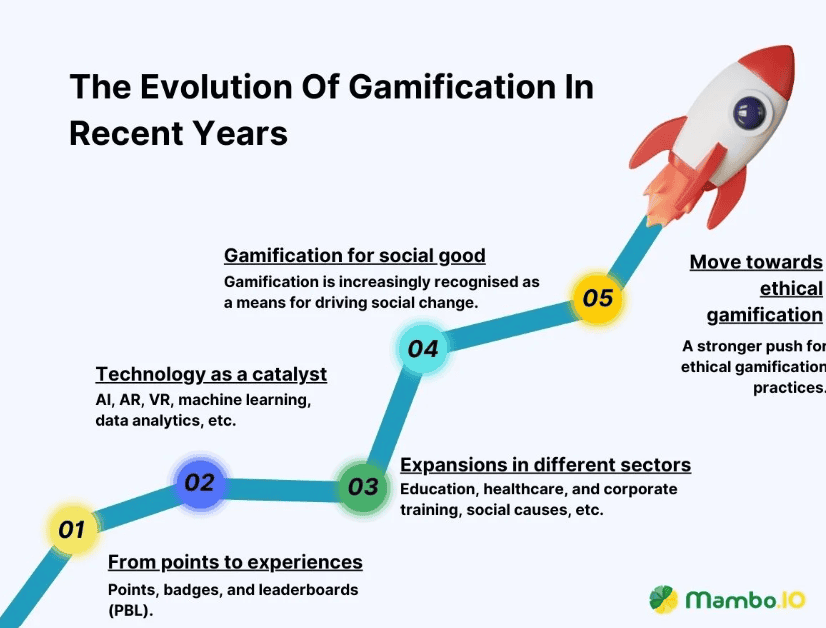 (Source: mambo.io)
(Source: mambo.io)
It is a part of persuasive system design and often uses game features to increase user engagement, productivity, focus, learning, crowdsourcing, knowledge retention, and even recruitment. Gamification has also been used to encourage physical exercise, improve relationships, reduce traffic violations, boost voter participation, and change attitudes about things like alternative energy. Many studies show that gamification generally has positive effects on people, although individual results can vary.
Gamification can be achieved by using different game mechanics, which are often connected to 8 core drives in the Octalysis framework.
General Gamification Statistics
- Gamification Statistics stated that nearly 85% of people would spend more time on apps or software if they included gamification.
- 72% of employees say gamification makes them work harder.
- Nearly 87% of employees are more productive when gamification is included in work tools.
- 67% of workers said burnout got worse during the pandemic.
- Game-based learning for children is expected to grow by 21.4% from 2019 to 2024.
- The global gamification market was worth $9.1 billion in 2020 and is expected to grow by 27.4%, reaching $30.7 billion by 2025.
- The gamification market is predicted to grow at a rate of 30.1% by 2024.
- The Human Resource sector is growing the fastest in the gamification market, with a growth rate of 27.8%.
- By 2025, the gamification market is expected to make $32 billion globally.
- Gamification Statistics stated that almost 78% of people say that a gamified hiring process makes them more interested in the job or company.
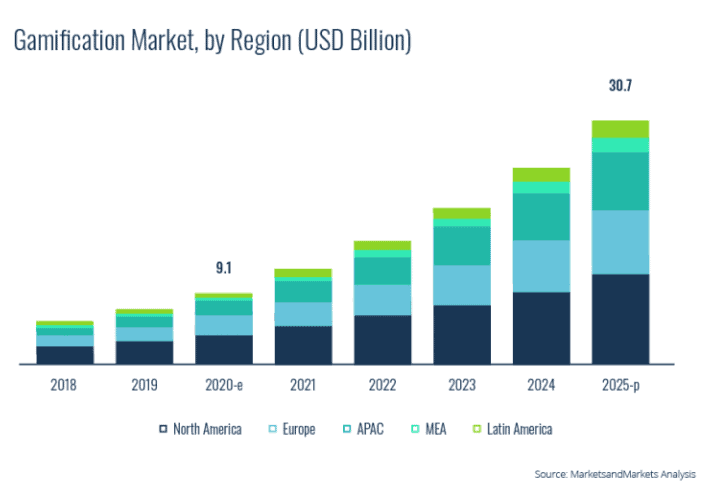 (Source: growthengineering.co)
(Source: growthengineering.co)
- Gamification Statistics stated that almost 69% of employees say they are more likely to stay with a company that uses gamification.
- 93% of marketers like using gamification in their strategies.
- Employees are 40% more likely to stay with a company that uses gamified activities.
- Almost 85% of workers become more engaged when gamification is used in training.
- 30% of workers enjoy advancing to higher levels in gamified tasks at work.
- Autodesk improved their conversion rates by 15% and trial usage by 40% by using gamification.
- Using gamification in sales meetings can save 15% of call time and increase sales by 10%.
- Popchip saw a 40% increase in sales from using gamified mobile ads, leading to $100M in sales.
- The use of gamification in education is expected to grow at a rate of 14% annually from 2022 to 2025.
- 67% of students prefer gamified learning over traditional methods.
- Around 87% of organizations plan to adopt gamification strategies in the next five years.
- By 2023, gamification in learning is expected to grow by 60.1%, especially in Africa.
- 85% of workers become more engaged when gamified techniques are used in training.
- Gamifying a website can increase interactions by 68%, social shares by 22%, and comments by 13%.
- 30% of businesses using gamified customer engagement strategies see a higher number of purchases and trial usage.
- 70% of global companies use some form of gamification.
- Gamification leads to a 14% improvement in skill-based assessments.
- Factual knowledge test scores go up by 11% with gamification.
- Gamified recruiting processes make companies 78% more appealing to job seekers.
- Gamification Statistics stated that nearly 89% of employees say gamified tasks make them more competitive.
Gamification Industry Statistics
- The gamification market is growing quickly and is expected to be worth over $18 billion in 2023.
- This growth is due to the increasing use of gamified solutions in areas like marketing, education, healthcare, and employee training.
- Gamification is no longer just a bonus but has become a key part of many industries.
- In 2023, more than 70% of the Global 2000 companies are using gamification in their business strategies. This shows how gamification is crucial for improving customer engagement, boosting employee productivity, and driving business success.
- In education, gamified learning is making a big impact. The eLearning market is expected to reach $278 billion in 2023, largely thanks to the rise of gamified learning platforms.
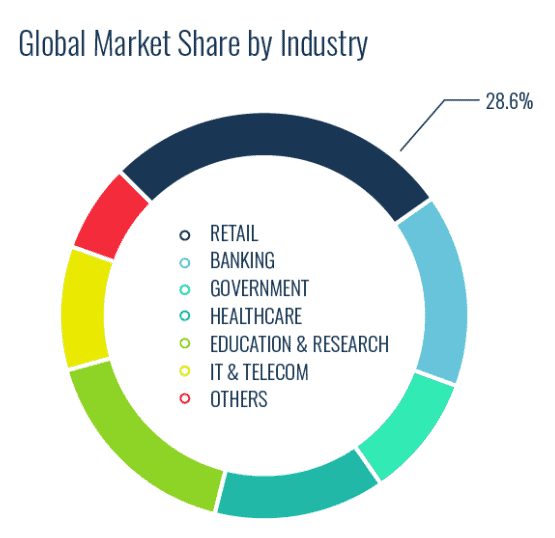 (Source: growthengineering.co)
(Source: growthengineering.co)
- These gamified courses make learning more enjoyable, help people remember information better, and improve the overall experience.
- In healthcare, gamification is being used to encourage healthier habits. The health and wellness gamification market is expected to reach $3.82 billion in 2023.
- Gamified fitness apps, wearables, and wellness challenges motivate people to live healthier and achieve their health goals.
- Virtual reality (VR) is also helping gamification grow. In 2023, VR gamification is expected to generate $2.5 billion in revenue.
- The immersive nature of VR creates better user engagement and opens up new possibilities for training, entertainment, and customer experiences.
- These gamification statistics show how much gamification is changing business and society.
- As we move through 2023 and beyond, gamification will continue to be a powerful tool, helping companies create engaging experiences, boost user involvement, and stay competitive in a constantly changing digital world.
Impact of Gamification on Performance
- Businesses using gamification have seen a 22% boost in employee profitability.
- Companies with gamification experienced a 21% rise in productivity.
- Gamification has helped increase customer satisfaction by 10%.
- Gamification led to a 48% increase in employee engagement.
- 30% of 500 business workers said gamification made them more engaged.
- Retailers using gamification have seen a 700% increase in customer acquisitions.
- Brands like eBay and Walgreens saw up to a 30% increase in engagement and customer loyalty thanks to gamification.
- 80% of US employees think gamified training is more effective than traditional methods.
 (Reference: zippia.com)
(Reference: zippia.com)
- Gamification can increase student productivity by up to 50%.
- Math games helped improve test scores by 34% after four months.
- About 75% of elementary school teachers in the US use gamification in their lessons.
- 67% of students prefer gamified learning over traditional methods.
- Gamification Statistics saw a 76% increase in sales and a 560% return on investment (ROI).
- Gamification Statistics grew its user base by 75%, reaching over 90 million users.
- 75% of all video content is watched on mobile devices.
- Personalized interactions and multi-channel communication help boost engagement.
- Not properly engaging users can stop gamified systems from reaching their full potential.
- The gamification market was valued at $4.9 billion in 2016, $6.8 billion in 2018, and $9.1 billion in 2020.
- The market is expected to reach $11.04 billion in 2021 and $30.7 billion by 2025.
- 89% of employees believe they would be more productive if their work included gamification.
- Almost 50% of business transformation programs fail due to poor employee engagement.
- 67% of students find gamified courses more motivating.
- 78% of people believe gamification would make a company more attractive to work for.
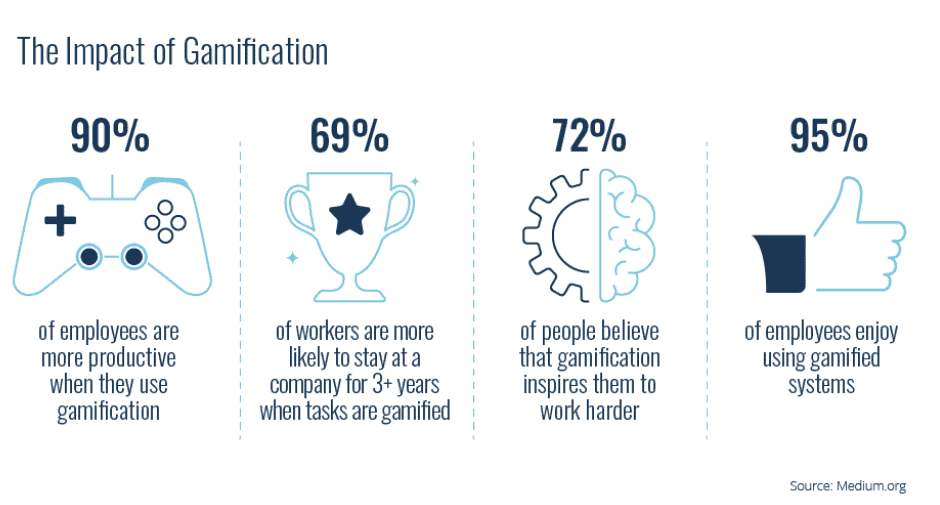 (Source: growthengineering.com)
(Source: growthengineering.com)
- Over 70% of gamification projects fail because of poor engagement and application.
- 75% of K-8 teachers in the US use digital games to engage students.
- Gamification can improve test scores by 34%.
- Using visuals like images increases knowledge retention by 30%.
- Gamification can boost productivity and engagement by up to 50%.
- 88% of employees say gamification makes them happier at work.
- Nearly 83% of employees are more motivated at work after gamified training.
- Game-based learning will generate over $24 million by 2024.
- Western Europe has the fastest growth in game-based learning.
- The HR sector is expected to see the most growth in gamification.
- The gamification market will grow at a rate of 24.2% from 2020 to 2030, reaching $30.7 billion by 2025.
You May Also Like To Read
- Texas Rangers Statistics
- Houston Astros Statistics
- Pittsburgh Pirates Statistics
- Fortnite Player Count Statistics
- Buffalo Bills Statistics
- Mobile Games Statistics
- Steam Statistics
- Video Gaming Statistics
- Simulation Games Statistics
- Surprising Pokémon Statistics
- PlayStation Statistics
- Minecraft Statistics
- Board Game Statistics
- eSports Statistics
Sales Gamification Statistics
- A Talent LMS survey found that 89% of people said they were more productive when their work was gamified.
- Kenco used a sales gamification tool and saw a 45% increase in their sales margin.
- According to HubSpot, 89% of people said gamification made them more productive at work, and 71% felt it gave them more energy.
- Gamification Statistics stated that almost 66% of workers say that gamification has helped reduce their stress. 72% of employees say gamification motivates them to work harder.
- 83% of employees who participate in gamified training say it makes them more motivated at work.
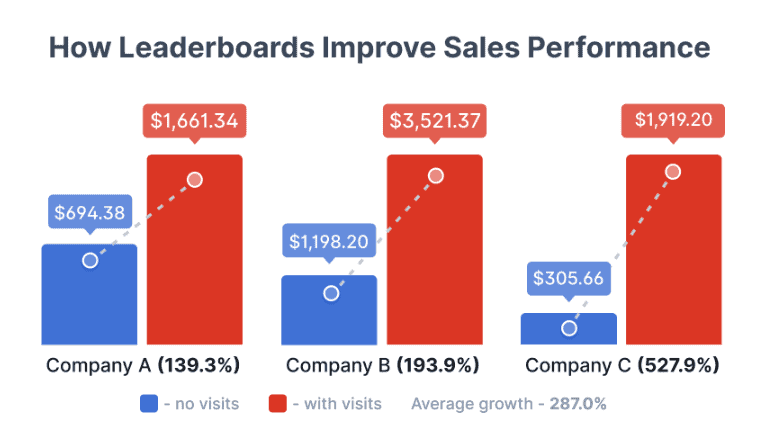 (Source: rallyware.com)
(Source: rallyware.com)
- Gamification Statistics stated that nearly 78% of people say a gamified hiring process makes the job or company more attractive.
- Gamification strategies increased engagement and loyalty by 30% at companies like Walgreens and eBay.
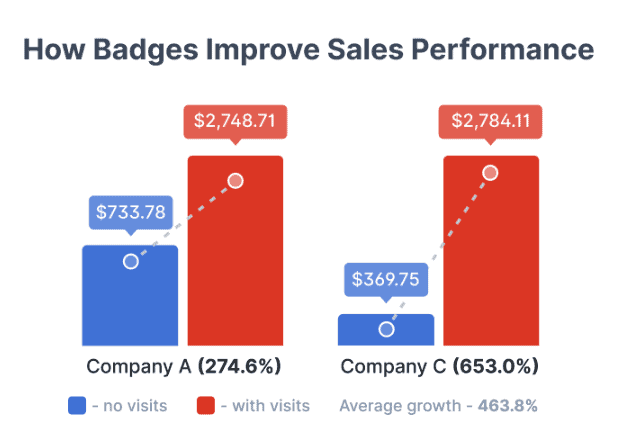 (Source: rallyware.com)
(Source: rallyware.com)
- 85% of employees are more engaged when their training involves gamification.
- 72% of workers feel motivated to work harder because of gamification.
- Employees who receive gamified training are 12% more productive than those who don’t.
- Gamification has been shown to increase student productivity by 50%.
- Gamified learning is 67% more engaging for students compared to traditional methods.
Gamification and User Activity Statistics
- Research shows that adding game-like elements to employee training is a game-changer. It helps new hires learn faster, improves information retention, and speeds up the onboarding process.
- Some studies even show a 90% reduction in the time it takes to onboard new employees. This makes training easier and more effective for recruits.
- According to a 2019 survey, 87% of workers feel more connected and part of a team when gamification is used in the workplace.
- This approach increases motivation and productivity, with 72% of employees saying they feel driven to work harder and 48% experiencing better engagement at work.
- Many global companies use gamification on their websites to improve customer loyalty. By adding game features, they encourage users to interact more with the site.
- For example, Verizon Wireless used gamification to increase the time visitors spend on their site, finding that it led to a 30% increase in browsing time.
Employee Engagement Statistics
- In 2023, employee engagement decreased for the first time in 10 years.
- 51% of employees say they want more acknowledgement from their work, especially managers.
- Almost 70% of workers who only get feedback twice a year or less want more feedback.
- Just 21% of employees used AI at work in the past week.
- Employee engagement is important for keeping workers and improving performance.
- Managers cause 70% of the differences in employee engagement.
- Gamification Statistics stated that almost 43% of highly engaged employees receive feedback at least once a week.
- Companies that give regular feedback have turnover rates 14.9% lower than those that don’t.
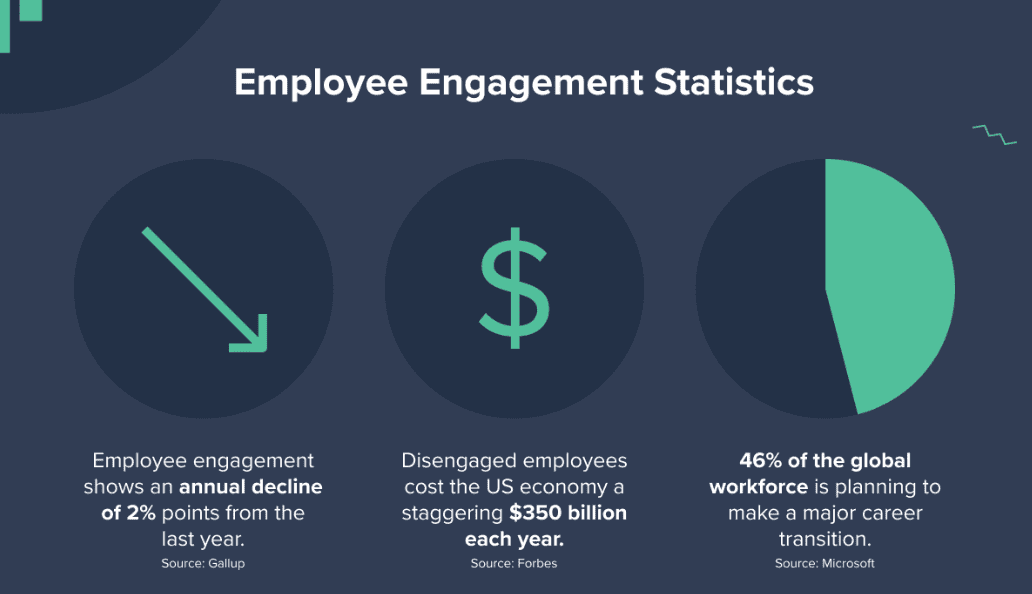 (Source: postbeyond.com)
(Source: postbeyond.com)
- 84% of engaged employees get recognition, compared to just 25% of disengaged employees.
- Gamification Statistics stated that almost 92% of employees want feedback more often than just once a year.
- 86% of employees would switch jobs if they were offered better opportunities for professional growth.
- Employee engagement is 15% higher, and retention is 34% higher when employees have chances to grow in their jobs.
- 94% of employees will stay longer with a company that invests in their development.
- Companies that focus on engagement can see a 20% increase in sales.
- Gamification Statistics stated that nearly 89% of employees say they would be more productive if their work involved gamification.
- 67% of students find gamified courses more motivating than traditional ones.
- Gamification increased engagement and loyalty by up to 30% for brands like eBay and Walgreens.
- 77% of HR leaders believe that annual reviews don’t reflect employees’ actual work.
- Nearly 86% of employees would change jobs if they had better opportunities for professional growth.
- 94% of employees are more likely to stay with a company that invests in their development.
- Companies with high employee engagement are 23% more profitable than those with low engagement.
- Regular feedback helps reduce turnover by 14.9%.
- Engagement is 15% higher, and retention is 34% higher when employees have growth opportunities.
- 94% of employees will stay longer if a company invests in their professional development.
- According to engagement surveys, employee engagement is 70% influenced by managers.
Gamification Use Cases Statistics
- Gamification is an effective way to improve skills, especially when it’s fun. It allows people to learn without worrying about making mistakes in real life.
- When Foursquare added gamification to its app, its size grew 10 times in five years.
- After starting the Roblox Education program in 2018, Roblox grew to over 90 million active users the following year, reaching 650,000 users globally.
- Kahoot!, a learning tool from Norway, grew rapidly, reaching over 90 million users and a 75% growth rate, becoming one of the fastest-growing education brands.
- Duolingo, a free language learning app using gamification, now has more than 300 million users.
- By applying gamification to its operations, Microsoft saw 3.5 times more employee engagement, leading to better sales with updated product information.
- By using gamification to educate clients about its services, Extraco’s conversion rate grew from 2% to 14%, and customer acquisition increased by 700%.
- Autodesk’s use of gamification raised its trial usage rate by 40% and increased conversion rates by 15%.
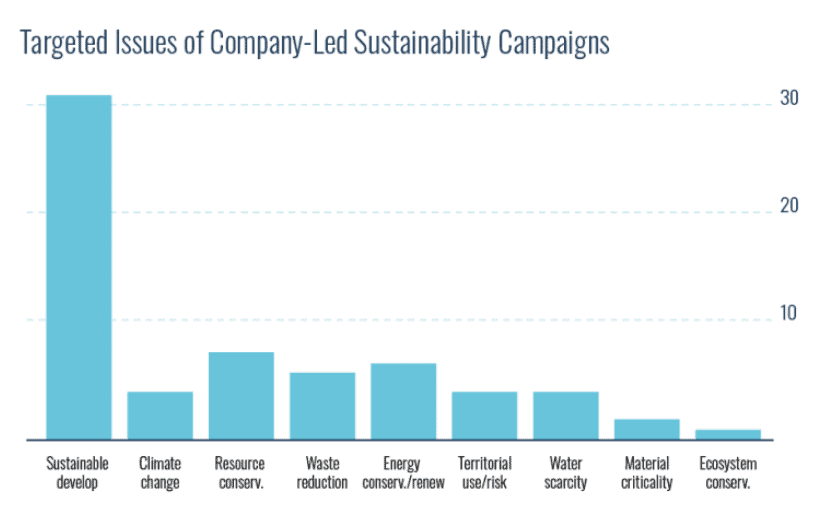 (Source: growthengineering.co)
(Source: growthengineering.co)
- Through gamified content from Gamify, KFC saw a 106% increase in in-store sales.
- M&M’s created a game app, “Eye Spy Pretzel,” that gained 25,000 new likes on Facebook and 6,000 shares.
- Moosejaw saw a 76% sales increase, 240,000 social media impressions, and a 560% ROI after using gamification.
- After launching the Starbucks Rewards app, the company earned $2.65 billion in extra revenue and saw 25% more loyal customers.
- After implementing a gamified sales tool, Kenco increased its profit margins by 45%.
- The luxury fragrance brand used gamification in a Christmas campaign, which resulted in 47,685 new raffle entries, 32,367 new users, and 18,983 new email subscribers.
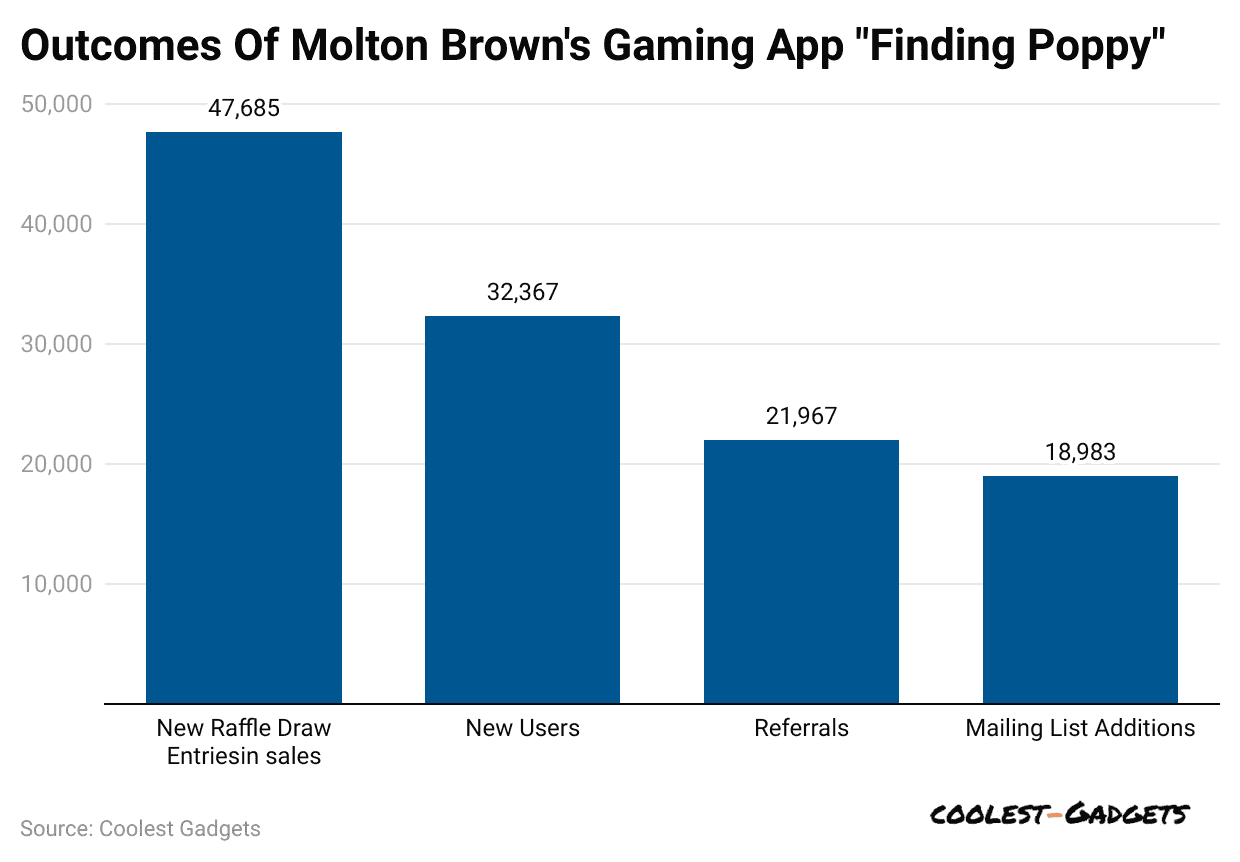 (Reference: financesonline.com)
(Reference: financesonline.com)
- Target created an app for customers to make Christmas wish lists, leading to 75,000 downloads and over 100,000 wish lists, with an estimated $92.3 million in sales.
- After gamifying its store, Teleflora experienced a 105% increase in Facebook referrals and a 92% conversion rate.
- Microsoft licensed Minecraft: Education Edition to 2 million users in 2017, and by 2019, that number grew to over 5 million.
- Using badges and a point system on its website, Verizon increased visitors’ browsing time by 30%.
- By turning its annual reviews into gamified experiences, LivingSocial saw over 90% of employees participate voluntarily.
Business Gamification Statistics by Employees
- Almost all employees, 95%, say they enjoy elements of gamification at work.
- Job seekers also like the idea of gamification when choosing a job. A report showed that 78% of people said gamification during recruitment would make a company or position more appealing to them.
- Gamification Statistics stated that about 30% of employees believe that learning through games is more engaging than traditional learning methods.
- Gamification helps 90% of employees be more productive at work. It also increases their engagement levels. For instance, a survey of 500 workers found that 30% of them said gamification makes them more motivated and involved at work.
- The same survey also showed that 27% of employees feel gamification encourages them to work harder, and 20% say it helps them stay focused and avoid distractions.
- Here’s the information rewritten in simple English while maintaining the original meaning:
- Most American workers get training at their jobs that include game-like elements.
- Research shows that 83% of workers who take gamified training feel motivated, while 61% of those who have regular training without any gaming features feel bored.
- A large 89% of employees say that gamification makes them feel happier and more productive at work. In comparison, about 53% of US workers feel unhappy at work. So, gamification can make a big positive difference.
- Along with making employees happier and more productive, gamification can also help keep workers around longer. 69% of employees said they would stay with a company for over three years if the company used gamification in the workplace.
- Around 80 million office workers in the US are casual gamers. A survey found that 24% of office workers play casual video games while on the job, and 35% of top executives, like CEOs and CFOs, also play games at work.
- Of those who play games during work hours, 65% do so at least once a month. 61% play games during lunch or breaks, and 52% play while working.
The Economics of Gamification
- Gamification increases customer engagement by adding fun elements like challenges, rewards, and progress tracking. This helps build customer loyalty and encourages them to keep coming back.
- The financial benefits of gamification go beyond just improving engagement and performance—it can also save money!
- Silver Grill Cafe, a smaller business, saw a 66% rise in return on investment (ROI) after introducing gamification in their sales process.
- Software company Autodesk increased its trial usage by 40% and boosted conversion rates by 15% after using gamification.
- Starbucks’ Rewards app resulted in a 25% increase in loyal customers.
- Major companies like Adobe, eBay, Panera, and Salesforce experienced a 30% growth in customer loyalty, measured by repeat visits, after adding gamified features.
- Extraco Bank grew its customer acquisition by 700% after implementing gamification.
- These examples show that gamification can improve customer loyalty and bring financial benefits to businesses.
Gamification and Upskills Statistics
- Gamification is becoming a popular method for training and skill development, especially as many industries face a growing skills gap. It helps make learning more engaging and interactive while also improving memory.
- Gamification Statistics state that gamified learning activates the hippocampus, which makes it easier to remember and recall information.
- The corporate world is the biggest user of gamified learning, with a significant 47.5% growth rate in recent years.
- By 2024, the market for gamified learning is expected to generate over $24 million in revenue.
- Around 78% of people say that a gamified hiring process makes them more interested in working for the company offering it.
- The market for gamification in education is expected to grow by 14% annually until 2025, reaching $25.7 billion, which is $12.3 billion more than the current market value.
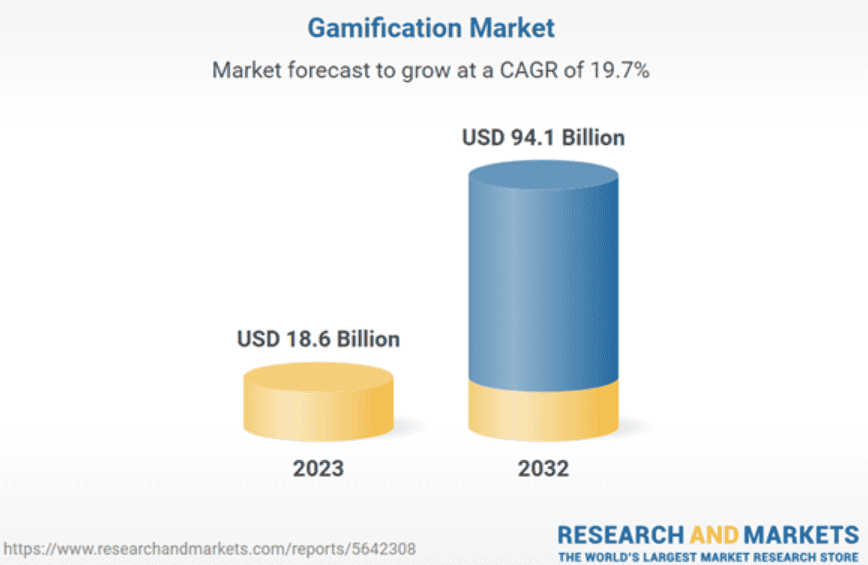 (Source: researchandmarkets.com)
(Source: researchandmarkets.com)
- Currently, 61% of US employees receive training that includes gamification.
- Gamified learning also benefits adult learners, improving their skill-based test scores by 14% and factual knowledge test scores by 11%.
- When gamification is used in workplace training, 85% of employees are more engaged. Major companies like Microsoft, Google, and Coca-Cola have already invested in gamified training programs.
- Traditional learning methods lead people to remember only 10% of what they read and 20% of what they hear. However, when learning is interactive and gamified, people can remember up to 90% of the material.
- In fact, only 3% of people are unproductive during gamified training.
The Future Trends of Gamification
As gamification continues to grow and show its potential to dominate the online market, here are some key trends to watch for the future:
#1. Personalization
In the future, gamified experiences will be more customized to fit each person’s preferences. This will increase user engagement and satisfaction. By giving users challenges, rewards, and feedback that match their interests and abilities, gamification will feel more personal, motivating users to keep coming back.
#2. AI Integration
Artificial Intelligence (AI) will make gamification smarter by adjusting in real time based on user actions. AI can track how a user performs and provide personalized feedback and challenges, keeping the experience fun and challenging without being too hard or too easy.
#3. Education and Training
Gamification will become a key part of online learning and professional training. Using game elements like quizzes, badges, and leaderboards, learning platforms will make education more interactive and enjoyable. For workplace training, gamification can create realistic scenarios where employees can practice skills safely.
#4. Health and Wellness
Gamification will be used in health apps and wearable devices to encourage healthier lifestyles. Fitness trackers and apps will motivate users to reach their health goals by tracking their progress and offering rewards. Features like daily step challenges or workout streaks will make getting fit more fun. Social features will also allow users to share their progress and support each other.
#5. Sustainability
Gamification will encourage eco-friendly actions by rewarding users for making green choices. Apps reward people for recycling, using less energy, or taking public transportation with points or badges, helping to raise awareness and encourage more sustainable habits.
#6. Blockchain and Rewards
Blockchain will make gamified reward systems more secure and trustworthy. By using blockchain technology, gamification platforms can ensure that users’ rewards and achievements are accurately recorded and cannot be tampered with, creating more confidence in the system.
#7. Social Connectivity
Social features in gamified platforms will help build communities and encourage teamwork, leading to higher user engagement. Things like team challenges, leaderboards, and sharing achievements will make the experience more social and fun, motivating users to stay involved.
#8. Data-Driven Insights
Gamification platforms will use data to improve and adjust their systems. By tracking how users interact with game elements, platforms can see what works best and make changes to improve the experience. This data-driven approach will help tailor challenges, rewards, and user interfaces to meet user needs better.
Benefits and Drawbacks of Gamification
Benefits of Gamification
- Higher Engagement: Gamification makes tasks more fun and interactive, which leads to better involvement from users. It is especially good at increasing customer interaction.
- Motivation and Behavior Change: Gamification encourages positive actions by offering rewards, feedback, and a sense of progress. It helps motivate people, promote healthy habits, and improve learning results.
- Better Learning and Retention: Using gamification in education makes learning more engaging and interactive, which helps students stay focused and remember what they learn. When lessons include game elements, students are more likely to retain information.
- Teamwork and Social Interaction: Gamification promotes collaboration through features like leaderboards, group challenges, and online communities, making it a great tool for teamwork.
- Useful Data and Insights: Gamification provides important information about how users behave, what they like, and how well they perform. This data can help improve the user experience, personalize content, and make smarter decisions.
- Stronger Brand Loyalty and Customer Happiness: Adding gamification to loyalty programs and marketing campaigns can increase customer satisfaction and strengthen their loyalty. Personalized rewards and challenges create a more enjoyable and memorable experience.
Drawbacks of Gamification
- Dependence on External Rewards: Gamification often relies on rewards like points or prizes, which can reduce people’s natural motivation and make them focus more on the rewards than the activity itself.
- Too Much Focus on Competition: Features like leaderboards can make people feel left out or discouraged if they’re not performing well compared to others.
- Shallow Engagement: Sometimes, gamification only motivates users to earn rewards, not to engage with or enjoy the experience itself fully.
- Resistance to Change: Some people might not like gamification and feel it’s forced or manipulative. It’s important to explain the benefits of gamification in overcoming these feelings.
- Challenges in Design and Implementation: Designing a good gamified experience takes careful planning and understanding of what users want. If the design is poor or the digital experience isn’t great, gamification might not work as intended.
Game Elements in Gamification
Gamification uses different game features to make activities more fun and engaging. These elements include points, badges, leaderboards, performance charts, stories, avatars, and teammates. Each of these elements helps users stay motivated and involved in their tasks.
#1. Points
Points are a key part of many gamified systems. Players earn points when they complete tasks or achieve goals. Points help measure progress and give immediate feedback on how well the player is doing. There are different types of points, like experience points (XP), redeemable points, and reputation points. The main goal of points is to motivate players by showing their progress and rewarding them for what they accomplish.
#2. Badges
Badges are visual symbols that show a player’s achievements. They are given when players complete certain challenges or reach goals. Badges can represent a player’s success, and they motivate players to complete specific tasks. They can also act as status symbols, showing off a player’s accomplishments, especially if the badge is rare or difficult to earn.
#3. Leaderboards
Leaderboards rank players based on their achievements, comparing them to others. This creates a sense of competition and motivates players to perform better, especially when they are close to reaching a higher rank. However, leaderboards can have both positive and negative effects. Some players may feel discouraged if they are at the bottom of the list, while others may be motivated by competition. Leaderboards work best when players are at similar skill levels and can challenge each other to improve.
#4. Performance Graphs
Performance graphs show how a player is doing over time, comparing their current performance to past results. These graphs focus on an individual’s progress rather than comparing players against each other. They are particularly useful for learning because they emphasize improvement. This feedback encourages players to focus on their own growth and development.
#5. Meaningful Stories
Stories in gamified systems give meaning and context to the tasks players complete. Instead of just earning rewards, players become part of a narrative that makes their actions more significant. Stories can be simple, like the goal of a game, or more complex, like role-playing game plots. These stories make activities more exciting by giving them a purpose beyond just earning points. For example, turning a routine task like running into a mission where the player must escape zombies makes it more fun.
#6. Avatars
Avatars are images or characters that represent players in a game. Players can choose or create their own avatar, which gives them a sense of identity in the game. Avatars can be simple pictures or detailed, 3D characters. This feature helps players connect with the game and makes the experience feel more personal. In team-based or multiplayer games, avatars also allow players to identify each other and work together.
#7. Teammates
Teammates, whether other players or virtual characters, can encourage collaboration and competition in the game. Players can work together toward a common goal or compete against each other for rewards. A combination of working together and competing has been proven to be effective for learning because it encourages both individual achievement and teamwork.
These game features help create an engaging and motivating environment, which can improve participation and success in areas like education and business training.
Conclusion
Gamification is a new and effective way to make dull and repetitive tasks more enjoyable. Many companies worldwide have found that using game-like activities in their training and daily work has led to better employee engagement, stronger teamwork, and higher productivity. This has also helped these companies increase their revenue.
The stats shared above show how gamification is making a positive impact on both businesses and workers.
Sources
FAQ.
Research shows that challenge-based gamification can improve student performance by 89.45% compared to regular lecture-based learning. Overall, students’ performance increased by 34.75%.
Hyper-personalization is the new trend in gamification, where experiences are customized for each person based on their choices, actions, and interactions. It goes beyond simple personalization, offering unique, data-based experiences that deeply connect with each user.
Hyper-personalization is the new trend in gamification, where experiences are customized for each person based on their choices, actions, and interactions. It goes beyond simple personalization, offering unique, data-based experiences that deeply connect with each user.

Joseph D'Souza started Coolest Gadgets in 2005 to share his love for tech gadgets. It has since become a popular tech blog, famous for detailed gadget's reviews and companies statistics. Joseph is committed to providing clear, well-researched content, making tech easy to understand for everyone. Coolest Gadgets is a trusted source for tech news, loved by both tech fans and beginners.


